
Last week we spent hundreds of hours looking at art at the Venice Biennale. We saw a lot of art. It’s a sprawling affair, that invites hundreds of countries to exhibit their nation’s best artwork.
We have a lot to talk about, so without any further ado, here’s part one of our Giardini slideshow with commentary. It features pavilions by Russia, Great Britain, Switzerland, Venezuela, Greece, Poland, Serbia, Japan, South Korea, Germany, the United States, and Canada. Look for part two later today.
RUSSIA
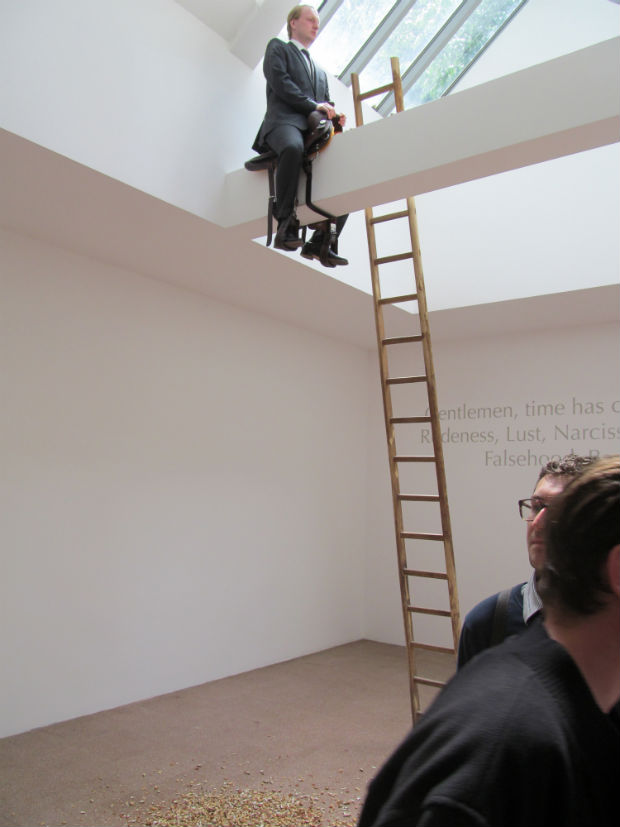
A Russian financier on high, clutching a Western saddle by the horn, seems fitting commentary on the country's maverick oligarchy. Vadim Zakharov's "Danae" project, curated by Udo Kittelmann, was certainly over-the-top, but it pleased the crowds. And we kind of liked it, too. It takes some creative chops to make a spectacle this grand.
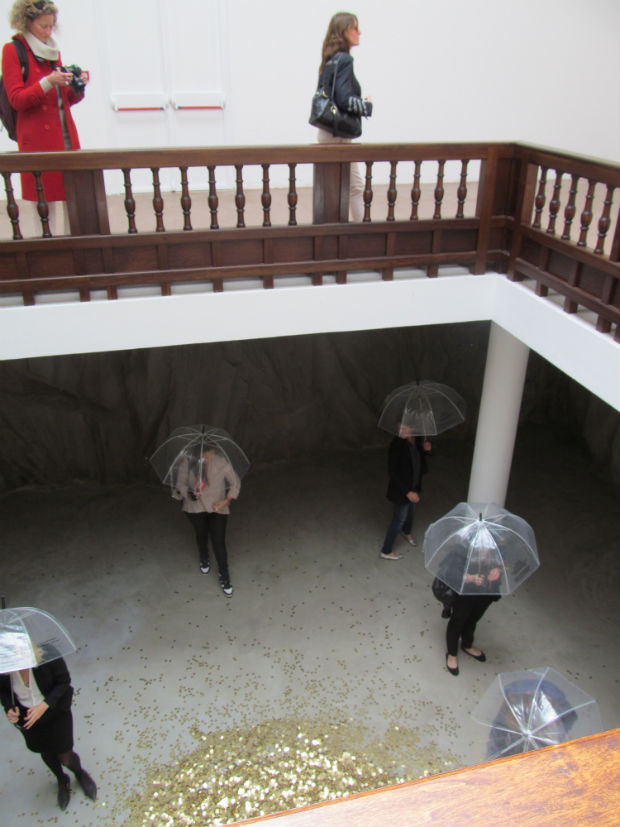
More Russia! Here Zakharov's "danae" currency pelts down on an all-female group of umbrella-holders.
VENEZUELA
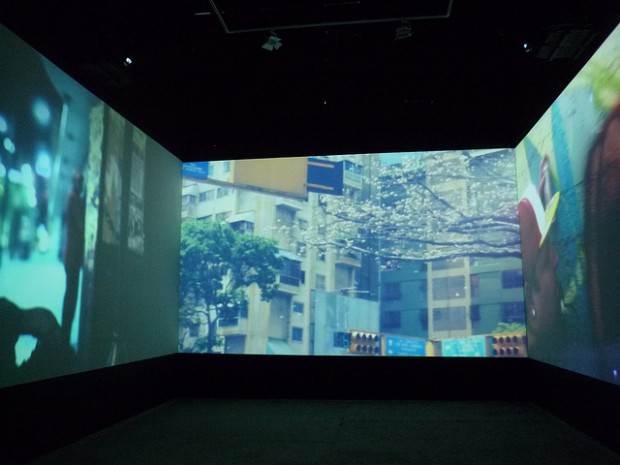
A multi-channel video exhibition that recognizes the murals, graffiti or street graffiti and urban art pieces made by artists affected by or linked to the "socialist revolution" launched by President Hugo Chavez in 1992. The video's arguably more educational than it is artful, but it gives the audience a good sense of the creative energies in the country. If only a little more of than energy had been brought to Venice, rather than reproduced.
SWITZERLAND

Valentin Carron's "The Snake and Moped" at the Switzerland Pavilion. Not too much to talk about here: a metal snake tracks the building. There are a few sculptures of brass horns and saxophones and in the foray, a moped.
GREECE

Stefanos Tsivopoulos's "History Zero", was one of the few artists to tackle a political subject. The video installation deals with the country's poverty-stricken citizens through a series of vignettes and careful attention is paid to shot composition and the install of each gallery. The story however, is more simplistic than we would have liked: an itinerant worker, searching trash heaps for scrap metal, finds Euros thrown in the trash by a wealthy art collector. Just your typical Uncle Scrooge whose waste turned into someone else's blessing! There's more to the story of course, but it's mostly dedicated to demonstrating the ways in which the poor, middle and upper class, are all connected. A regular Cloud Atlas! We liked the catalog, which describes the history of alternative economies ranging from bartering to Bitcoin. A visual version of the book's contents was also shown.
POLAND

Poland brought some noisy bells by Konrad Smolenski. If not for the earplugs offered to visitors before entering, our hearing would've been wrecked. Thanks, sound art.
SERBIA
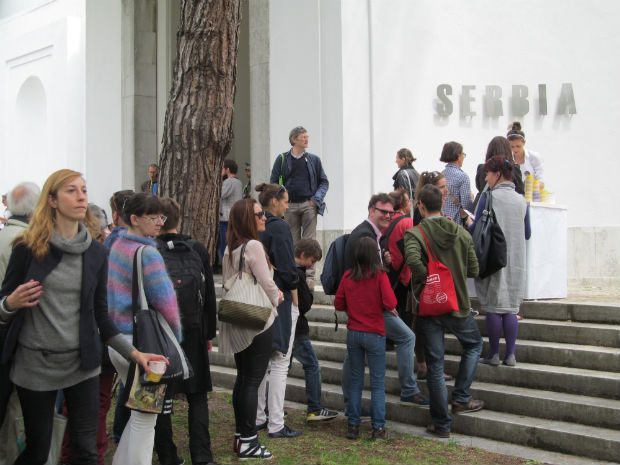
Serbia's national museums have been closed to the public for over a decade, so this is one of the few chances artists have to represent their country in an official capacity. They were the only pavilion to celebrate the occasion by serving crowds gelato at their official opening.
JAPAN

Japan's Koki Tanaka asks groups of people to collaborate on tasks they might normally do solo. It's an attempt to address the question, “How is it possible to take on the experiences of others as one’s own?” It's also an attempt to make sense of the March 11, 2011 earthquake and tsunami. In this video, which was shot prior to the earthquake, we watch eight hairdressers give one woman a haircut, in what's supposed to now read as a metaphor for the act of working together to build a postquake society. This may just be my Western perspective, but I prefer the direct and more challenging work of Chim↑Pom.

Some wall text and documentation explaining that Tanaka worked with the materials Japan used in the 2012 Architecture Biennale. Someone kill the "history of architecture" biennale theme. It's been done to death.
SOUTH KOREA
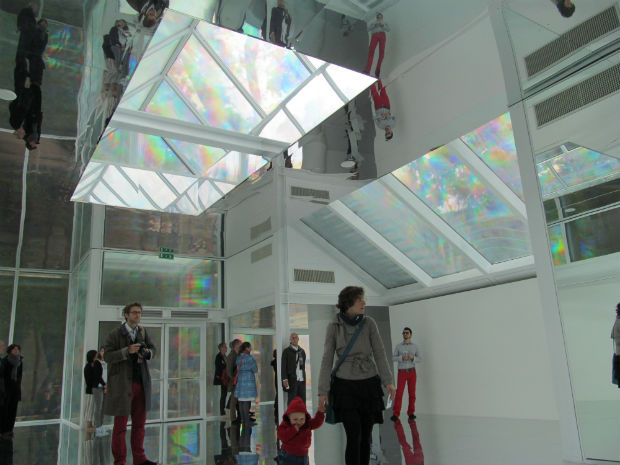
Kimsooja's installation at the Korean Pavilion had a long line wrapping outside its rainbow-tinted pavilion. The space looks nearly the same inside as out. Not too much to talk about there, but the room did make a nice backdrop for selfies, so I guess it's not all bad.
GERMANY

Ai Weiwei's "Bang", 866 three-legged wooden stools suspended inside the German Pavilion. According to the PR, the web-like structure pictured above is a nostalgic commentary on how stools used to be made of wood and are now made from plastic and steel. Noted.

Ai Weiwei wasn't the only artist in the German Pavilion. Pictured here is a thoughtful, clinical contribution by filmmaker Romuald Karmakar, his "Hamburg Lectures". The film features a 70-year-old actor, well-known in Germany, who dryly reads two lectures given at an Islamic community center known as a place of worship for September 11th terrorist suspects.
THE UNITED STATES
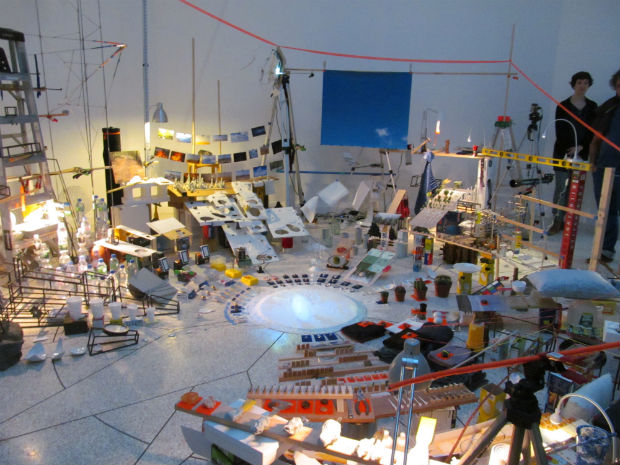
We published a review last week of the Sarah Sze exhibition, describing its most compelling qualities as ritualistic. This is a pretty good example of that.

This room is the key to the show, should one chose to interpret it, as I did last week, as worship site for reproduction and mass produced objects. Here, the mirrors help point out the expansiveness of her project; the reflections seem to replicate the installation endlessly, as if to infinity.
CANADA
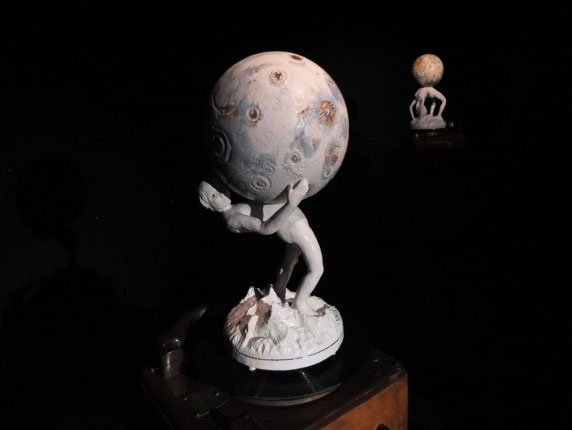
Shary Boyle's porcelain sculptures Onus Opus and Bridge and Chorus. Last week's review initially described these porcelain figurines as precious, but backed off that assessment upon further consideration of the show's themes. These pieces could stand to be a little weirder—more rabbits riding young girls please—but as whole, the show isn't bad.
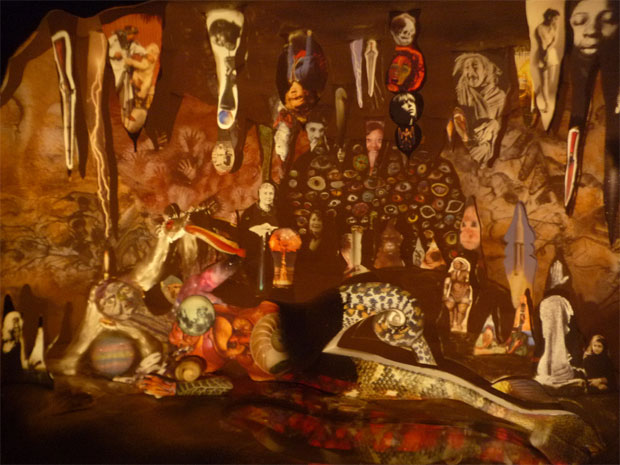
Shary Boyle's "The Cave Painter". Understanding this work, is understanding the show.


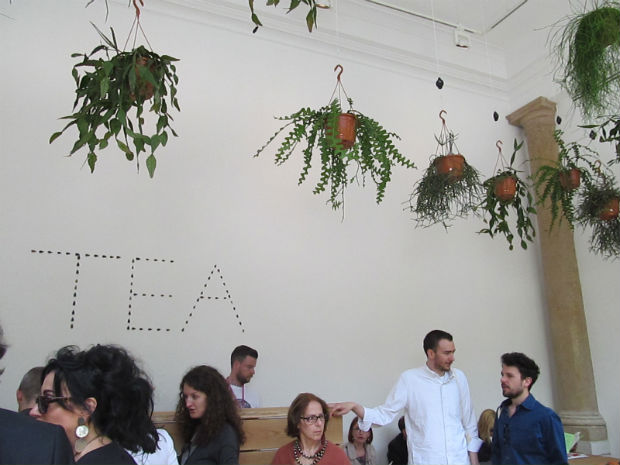


Comments on this entry are closed.